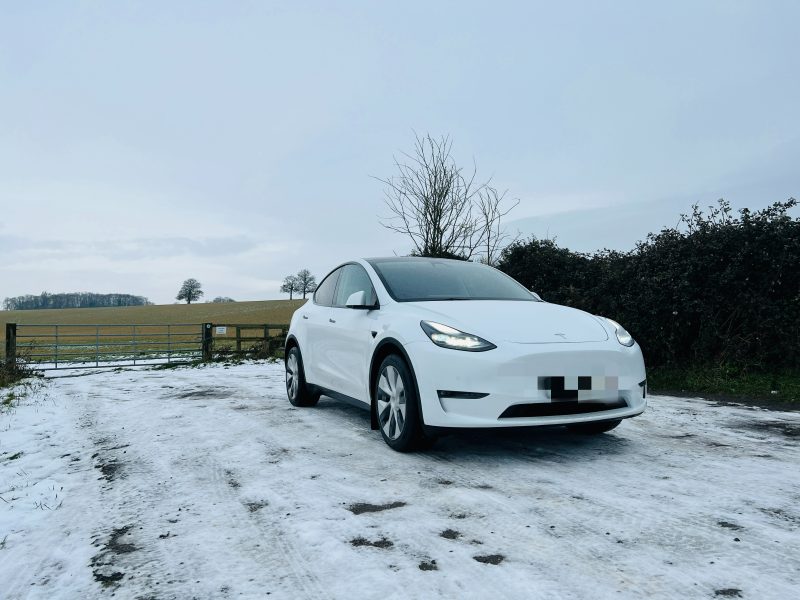Last Updated on: 4th February 2025, 06:11 pm
- The Electric Car Scheme shares essential advice for EV owners driving in cold weather
- The EV salary sacrifice provider also highlights how to steer clear of fines during icy conditions
The Electric Car Scheme has unveiled its top recommendations for electric vehicle owners to navigate cold weather, plan for longer journeys, and avoid fines.
The UK has already experienced several bouts of icy weather this winter, with forecasts suggesting this trend will persist throughout February. In fact, many meteorologists predict temperatures will plummet well below freezing across most of the country in the coming weeks. With this in mind, salary sacrifice EV provider The Electric Car Scheme has outlined key tips for drivers this February.
Preparing for Winter Journeys
Cold weather affects EVs in various ways, but the most significant consideration is its impact on your car’s battery. Low temperatures can reduce battery efficiency by approximately 15%, so it’s crucial to account for this when planning trips and potential charging stops.
To mitigate this effect, there are several steps you can take. If you’re fortunate enough to have a garage, ensure it’s well-insulated. This will help keep your car and its battery warmer while charging overnight, when energy costs are at their lowest.
For those without access to indoor parking, many EVs come equipped with a pre-conditioning feature that allows you to warm up the battery before setting off. If your vehicle has this option, use it to ensure optimal battery performance, particularly in winter. If you can pre-condition while still plugged in, you’ll minimise energy loss and extend your range. Just remember never to leave your car unlocked or unattended during this process, as it poses a theft risk and could invalidate your insurance.
Driving Tips
Once you’re on the road, driving cautiously will help you stay safe and conserve battery life. Reducing your speed slightly from 70mph to around 65mph can significantly enhance your EV’s range and efficiency, while also giving you and other road users more time to react to icy or slushy patches. Similarly, selecting ECO Driving Mode (or its equivalent) adjusts acceleration and power delivery, preserving the battery and preventing sudden speed changes or wheelspin.
When it comes to staying warm in the car, balance is key. Staying warm is essential for remaining alert and driving safely, but wearing too many layers that restrict your movement can be hazardous.
Instead of cranking up the heating, consider using heated seats and steering wheels, which are more energy-efficient, especially if you’re driving alone. While bulky coats are best avoided in the car, adding an extra layer and avoiding shorts is a sensible choice for long drives.
Avoiding Fines
Winter driving also increases the risk of breaching the Highway Code and incurring fines. For example, if it’s been snowing, ensure you clear all snow and ice from your windscreen and windows before driving. Failing to do so could result in a breach of rule 229 of the Highway Code and a fine.
While wearing a warm coat or jacket isn’t prohibited, removing it while driving after the car has warmed up could lead to a £100 on-the-spot fine. This is because it may cause drivers to take their hands off the wheel, which is deemed dangerous. It could also result in three penalty points on your licence if caught.
Finally, if you’re stopping to charge your EV in cold weather, take the time to do so safely, even if it means braving the cold a little longer. According to Highway Code rule 239, EV drivers must park close to charge points and avoid creating trip hazards for pedestrians. Otherwise, you could face a fine of up to £130.
The Electric Car Scheme CEO and Co-Founder Thom Groot commented:
“EV drivers specifically need to be aware that cold temperatures impact their range. Accelerating gradually and maintaining consistent speeds will not only maximise your energy efficiency but also help reduce the risks of winter hazards, like icy or wet roads.
“Staying safe and avoiding fines often go hand in hand, but during cold weather, it’s important not to let simple things or time-saving measures in the cold catch you out. Staying a little bit warmer, or not spending the time clearing your windows and windscreen totally is simply not worth the fine or penalty points you could incur. EVs are as safe and winter-appropriate as any car, as long as you know how to look after them and understand the differences ahead of time.”









